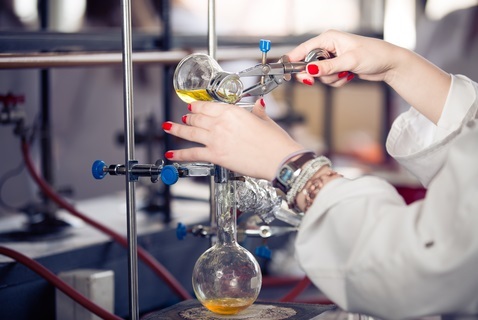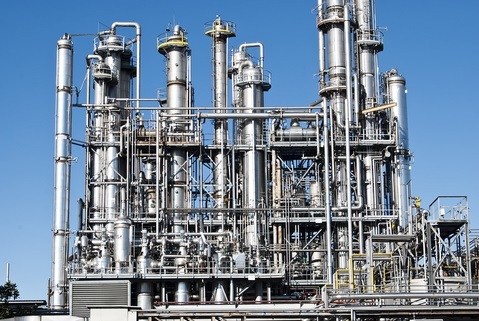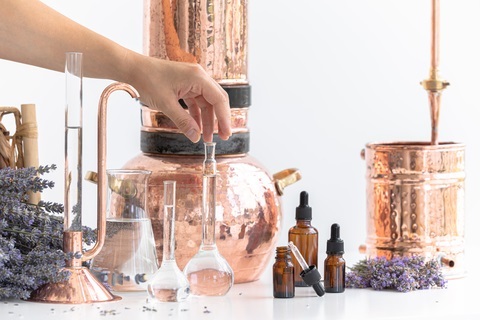
 Data Structure
Data Structure Networking
Networking RDBMS
RDBMS Operating System
Operating System Java
Java MS Excel
MS Excel iOS
iOS HTML
HTML CSS
CSS Android
Android Python
Python C Programming
C Programming C++
C++ C#
C# MongoDB
MongoDB MySQL
MySQL Javascript
Javascript PHP
PHP
- Selected Reading
- UPSC IAS Exams Notes
- Developer's Best Practices
- Questions and Answers
- Effective Resume Writing
- HR Interview Questions
- Computer Glossary
- Who is Who
Distillation: Definition, Process, Types, and Significance
Introduction
Distillation is a process used to separate and purify different components of a mixture. It is one of the most important techniques used in chemistry, pharmaceuticals, and many other industries.
Distillation is based on the principle of differences in boiling points of the components of a mixture. It involves heating the mixture and then cooling the vapor to condense it into separate components.
Definition of Distillation
Distillation is a process that involves separating and purifying the components of a mixture by heating and cooling.
It is a physical separation technique used to separate components of a liquid mixture based on their differences in boiling points.

Distillation Process
The distillation process involves the following steps ?
Heating the Mixture: The mixture is heated to its boiling point. The heat source can be direct or indirect, and the temperature is carefully controlled to prevent the mixture from boiling too violently.
Vaporization: As the mixture heats up, it begins to vaporize. The vapour contains the components of the mixture.
Separation: The vapour is then passed through a condenser, which cools the vapour and condenses it back into liquid form. The condensed liquid is collected in a separate container. The liquid that is collected is enriched in the more volatile component of the mixture, which has a lower boiling point.
Repeat process: The distillation process can be repeated multiple times to obtain a higher degree of purity.
Types of Distillation
There are different types of distillation techniques used depending on the nature of the mixture and the desired outcome.
The following are the common types of distillation ?
Simple Distillation
This is the most basic type of distillation. It is used to separate two or more liquids with different boiling points. Simple distillation involves heating the mixture until it boils, then condensing the vapour and collecting the liquid in a separate container.
Simple distillation is not effective for separating liquids with boiling points that are very close.
Fractional Distillation
Fractional distillation is used to separate a mixture of two or more liquids with similar boiling points. It is a more advanced form of distillation and involves using a fractionating column.
The fractionating column is a long tube filled with small glass beads or plates that provide a large surface area for the vapour to condense and re-evaporate. As the vapour passes through the fractionating column, the temperature decreases, and the components of the mixture with lower boiling points condense on the beads or plates. The components with higher boiling points continue to rise up the column and eventually condense and collect in a separate container.
Steam Distillation
Steam distillation is a process used to extract essential oils from plants. It involves passing steam through a plant material to extract the oils. The steam carries the oils with it, and as it cools, the oils condense and separate from the water.
Vacuum Distillation
Vacuum distillation is used to distil liquids that have high boiling points. It involves lowering the pressure in the distillation flask, which lowers the boiling point of the liquid. This allows for the liquid to be distilled at a lower temperature, reducing the risk of thermal degradation.
Azeotropic Distillation
Azeotropic distillation is used when two or more liquids form an azeotrope, which is a mixture of liquids that has a constant boiling point and cannot be separated by normal distillation. Azeotropic distillation involves adding a third component to the mixture that will form a new azeotrope with one of the components, allowing for the separation of the other component.
Significance of Distillation
Distillation is a crucial process in many industries, including pharmaceuticals, petrochemicals, food and beverage, and essential oil production.
The significance of distillation lies in its ability to separate and purify components of a mixture. This is important in many industries where the purity of a product is crucial for its effectiveness, safety, and quality.
Pharmaceuticals
In the pharmaceutical industry, distillation is used to purify and isolate different components of a drug.
This is important for ensuring that the drug is safe and effective. Distillation is also used to remove impurities from solvents, which are used in the manufacturing process of drugs.
Petrochemicals
In the petrochemical industry, distillation is used to refine crude oil into different products, such as gasoline, diesel, and jet fuel.
Crude oil contains a mixture of different hydrocarbons, each with a different boiling point. By distilling crude oil, these hydrocarbons can be separated and refined into different products.

Food and Beverage
Distillation is used in the food and beverage industry to produce alcoholic beverages, such as whiskey, vodka, and rum.
The process involves fermenting a mixture of ingredients, then distilling the resulting liquid to increase the alcohol content and remove impurities.
Essential Oil Production
Distillation is used to extract essential oils from plants. Essential oils are concentrated liquids that contain the aroma and flavour of the plant. Steam distillation is the most common method used to extract essential oils.
The process involves passing steam through plant material, which causes the essential oil to evaporate. The steam and essential oil are then condensed and separated, with the essential oil being collected in a separate container.

Conclusion
Distillation is a vital process used in many industries to separate and purify components of a mixture. The process involves heating the mixture to vaporize its components, then cooling the vapour to condense it back into separate components.
Different types of distillation are used depending on the nature of the mixture and the desired outcome. The significance of distillation lies in its ability to produce pure and safe products, which is crucial in many industries, including pharmaceuticals, petrochemicals, food and beverage, and essential oil production.

